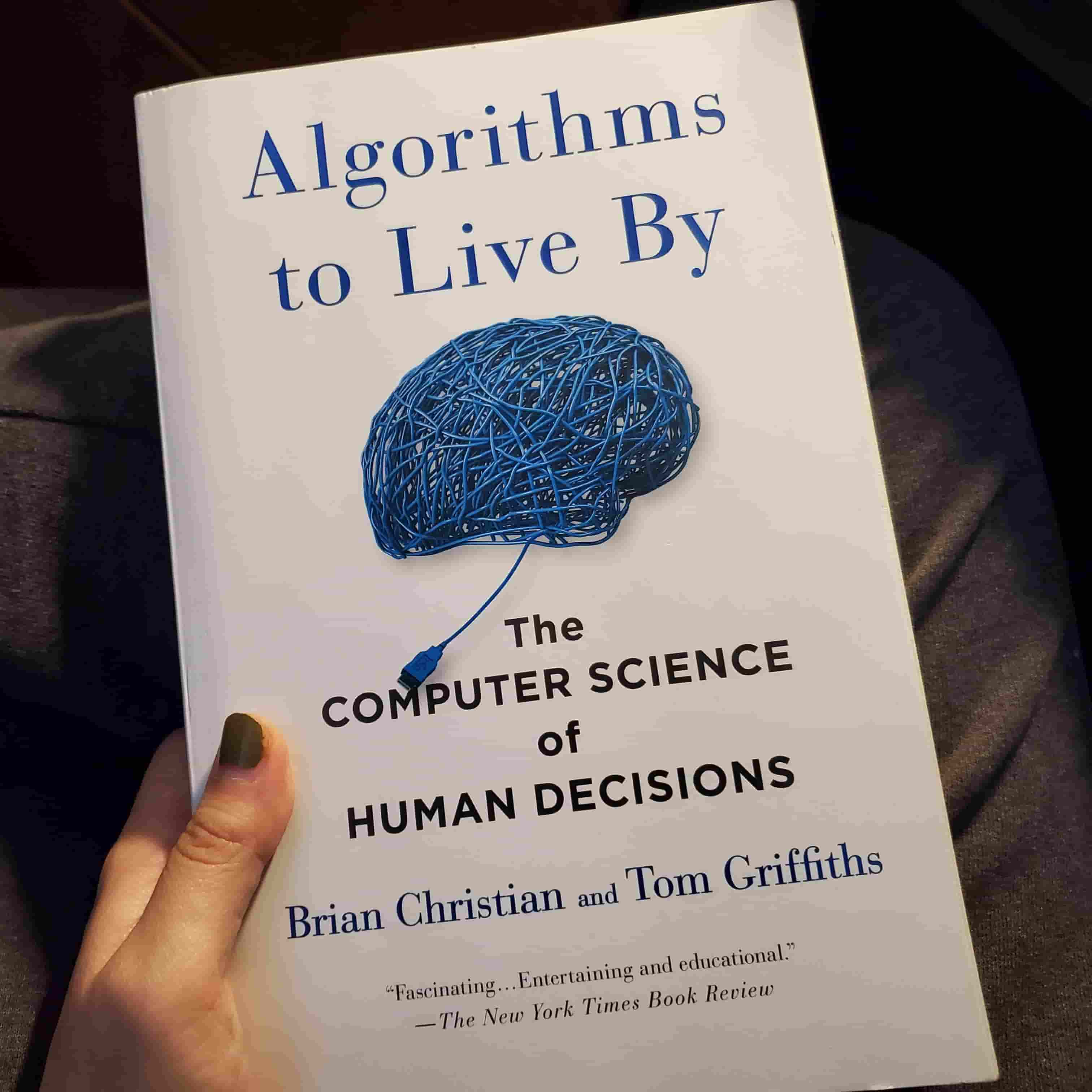
EDIT 08/02/24: Wrote a little addendum to this post.
Algorithms to Live By is a popular science book featuring a rich variety of striking real-world examples, from the fall of the Berlin Wall to tennis tournaments, that illustrate the ubiquity of the principles of computer science.

Having been taking an intermediate programming course for school, I read this book at a pretty opportune time. Not only was it generally very interesting, but it was a very welcome break from tedious programming assignments, and helped keep me motivated. More importantly, the book also convinced me to think of computer science as a practically universal mode of logic, which can show you new ways of thinking about all kinds of things in the world.
If you want to become more familiar with computer science, I’d highly encourage you to read this. The authors make analogies to everyday endeavors such as sorting a bookshelf or inviting guests to your home, which helps a lot with understanding. On the other hand, even if you already understand every concept described in the book, I’d recommend it nevertheless—the sheer volume and variety of connections the authors make to human nature and society is bound to show you new perspectives.
In fact, I wouldn’t strictly consider this book a computer science book, by any means, because it also describes what I guess you could call the philosophical extensions of computer algorithms. The book often struck me more as multi-disciplinary, with roots in computer science. It may not be to everyone’s taste, but I found it pretty illuminating.
ADDENDUM: Since writing my post on the Madoka Magica series, I’m realizing how flat and unenthused this one sounds in comparison (Which is frustrating, because CS is super interesting and I don’t want to sound boring when I talk about it  ). I guess it’s partly because I wrote this review months after actually finishing the book, based off a few short notes I wrote while reading, and partly because if I do get into detail about the contents of the book, I’m worried I’d just be parroting it meaninglessly. In any case, I’d like to offer a little more about this book as to not sound so detached.
). I guess it’s partly because I wrote this review months after actually finishing the book, based off a few short notes I wrote while reading, and partly because if I do get into detail about the contents of the book, I’m worried I’d just be parroting it meaninglessly. In any case, I’d like to offer a little more about this book as to not sound so detached.
This is the type of book that supplies you with so many interesting tidbits of information that I still find myself mentioning things that I learned from it in conversation in a sort of “Hey, speaking of __, did you know that __?” fashion (And not just to math or computer nerds, mind you!). Many concepts outlined in the book are simply so compelling and so relevant to everyday activities that I can’t not think of the 37% rule whenever I’m doing something like searching for an apartment or a parking spot. And though I haven’t picked up this book since March, I still remember the intrigue I felt while reading about crazy stuff like calculating pi by tossing needles onto lined paper.
With that said, the book doesn’t just throw information at you either. Every technical concept is interpreted quite thoughtfully, and the authors introduce plenty of context going into each chapter.
Anyways, I hope this might convince you to give this book a try. I’d say the language and explanations in the book are fairly casual and suitable for the average reader, as popular science tends to be.
Return